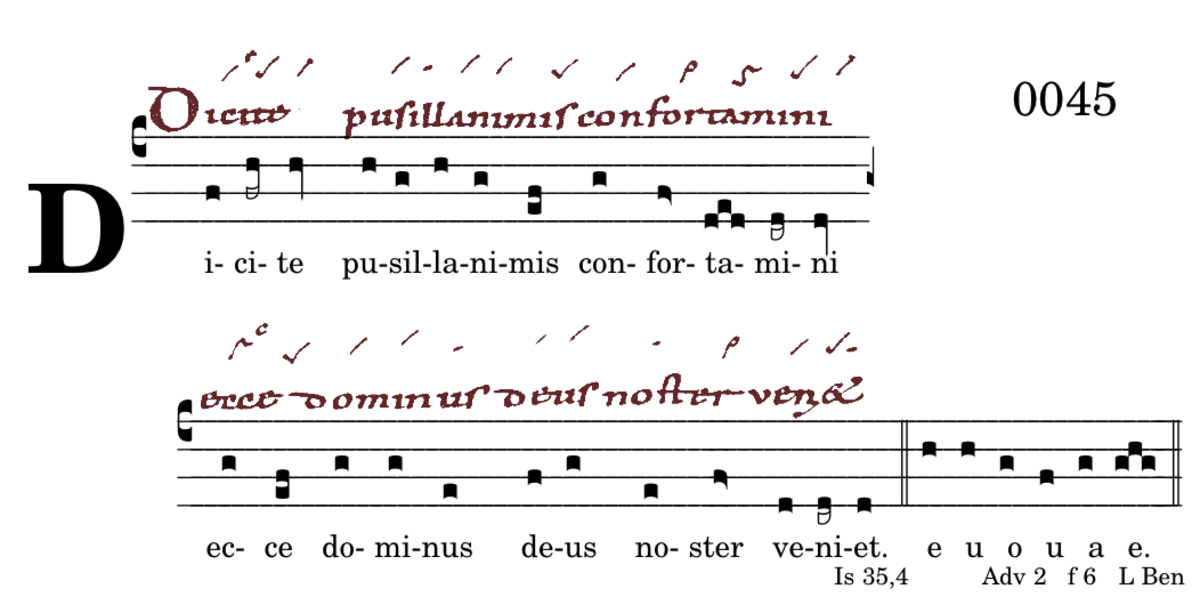🔘 IN GR TR AL OF CO xxxxx ✅ 2️⃣ 0️⃣ 3️⃣ 4️⃣ 5️⃣ 6️⃣ 7️⃣ 8️⃣ xxxxx AN RP IV alia
0045 AN Dicite pusillanimesModus 1
Vierteilig. Die ersten zwei Teile könnten selbst schon eine eigene Antiphon sein.
FML alloquium. Diese Formel erscheint hier zum ersten mal in H. Das aequaliter zeigt an, dass der erste Ton des kPes auf der Binnensilbe unisonisch mit dem ersten Ton verbunden ist. Das AMn von 2005 schreibt hier den Pes unisonisch, in allen weiteren Fällen aber wieder nicht. Es ist die Eigenschaft von H, solche Informationen nur beim ersten Erscheinen einer Formel/Cento zu geben, dann als gewusst vorauszusetzen.
1TER de5. Nach vorne wegen der Menge der Silben erweitert, am Satzende, auf dem letzten Akzent nkTrc.
Die zweite Hälfte der Antiphon entspricht dem 1 TYPOS:
1NOV typ variiert allerdings, und nimmt das Gewicht zurück. „…dominus“ steht im Schatten von „déus nóster“. Die
~Vrg mut mit celeriter widerspricht der gängigen Vorstellung eine Vrg str sei eine Zweitonneume.
1TER conc , der Cephalicus verstärkt die Betonung „noster) vé-niet“.
● Sagt zu den Verzagten: Seid stark,
siehe der Herr, euer Gott, wird kommen.
● Say to the discouraged: Be strong,
Behold, the Lord your God will come.
In four parts. The first two parts could be an antiphon in themselves.
FML alloquium. This formula appears here for the first time in B. The aequaliter indicates that the first tone of the kPes on the internal syllable is connected in unison with the first tone. The AMn of 2005 writes the pes in unison here, but not in all other cases. It is the characteristic of H to give such information only at the first appearance of a formula/cento, then to assume it as known.
1TER de5. Extended forwards because of the number of syllables, at the end of the sentence, on the last accent nkTrc.
The second half of the antiphon corresponds to 1 TYPOS:
1NOV typ varies, however, and reduces the weight. „…dominus“ stands in the shadow of „déus nóster“. The
~Vrg mut with celeriter contradicts the common idea that a Vrg str is a second tonneum.
1TER conc , the cephalicus reinforces the emphasis „noster) vé-niet“.

